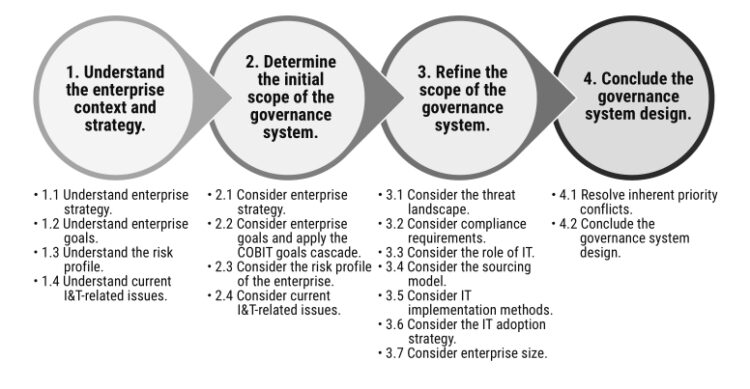Designing a Tailored System
A tailored system refers to customization of the governance system as per organizational requirements.
The COBIT 2019 Framework is flexible and can be customized as per various factors or also called as design factors. This customization results in a tailored system. The tailored system is The design factors may include
- the organizational character and profile
- the size of the organizational
- the organizational industry sector
- regulatory landscape
- threat landscape
- role of IT in the organization
- technology-related infrastructure
The COBIT 2019 Framework also provides a Governance System Design Workflow to be used for developing a tailored system.
The Governance System Design Workflow has following stages and steps
Stage 1. Understand the enterprise context and strategy
1.1 Understand enterprise strategy.
1.2 Understand enterprise goals.
1.3 Understand the risk profile.
1.4 Understand current I&T-related issues.
Stage 2. Determine the initial scope of the governance system
2.1 Consider enterprise strategy.
2.2 Consider enterprise goals and apply the COBIT goals cascade.
2.3 Consider the risk profile of the enterprise.
2.4 Consider current I&T-related issues.
Stage 3. Refine the scope of the governance system
3.1 Consider the threat landscape.
3.2 Consider compliance requirements.
3.3 Consider the role of IT.
3.4 Consider the sourcing model.
3.5 Consider IT implementation methods.
3.6 Consider the IT adoption strategy.
3.7 Consider enterprise size.
Stage 4. Conclude the governance system design
4.1 Resolve inherent priority conflicts.
4.2 Conclude the governance system design.
The various stages as recommended by the COBIT 2019 Framework prioritizes governance and management objectives, is as

Go back to COBIT 2019 Tutorial page

